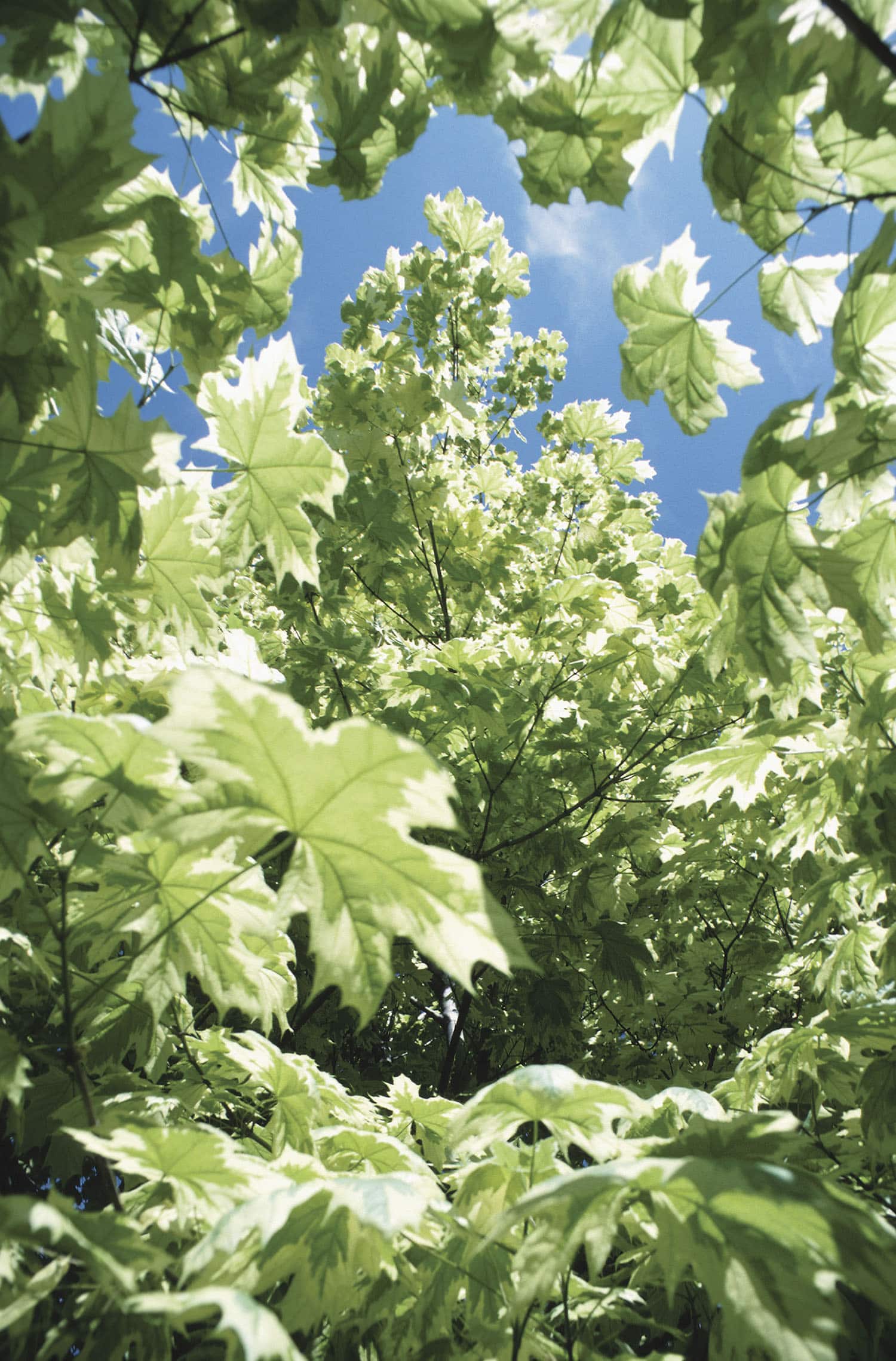
The Clyde Climate Forest was launched on 1 June 2021
The Clyde Climate Forest was launched on 1 June 2021 and enthusiastically endorsed by the eight leaders of the councils that comprise the Glasgow City Region Partnership.
Welcoming the launch of the Clyde Climate Forest, Mairi McAllan, Scottish Government’s Minister for Environment, Biodiversity and Land Reform said:
‘This is a significant and well-timed initiative showcasing all that is good in tree planting … It is also a first for Scotland, with eight local authorities working together with government and other partners on a major woodland creation initiative.
‘Tree planting is key to tackling the twin crises of climate change and biodiversity loss and there is tremendous support for it across Scotland. The Clyde Climate Forest taps into this and the benefits will last for generations.’
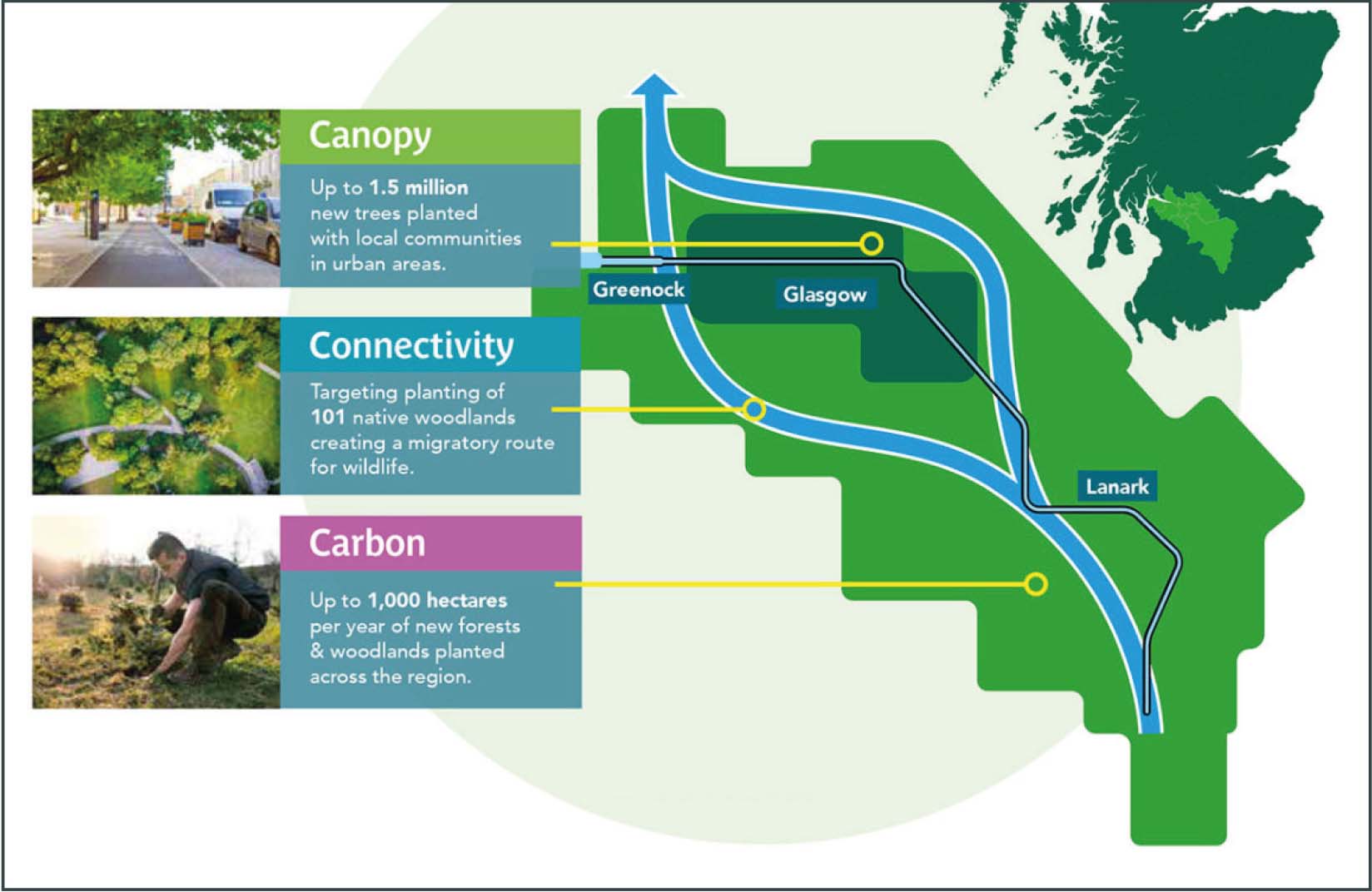
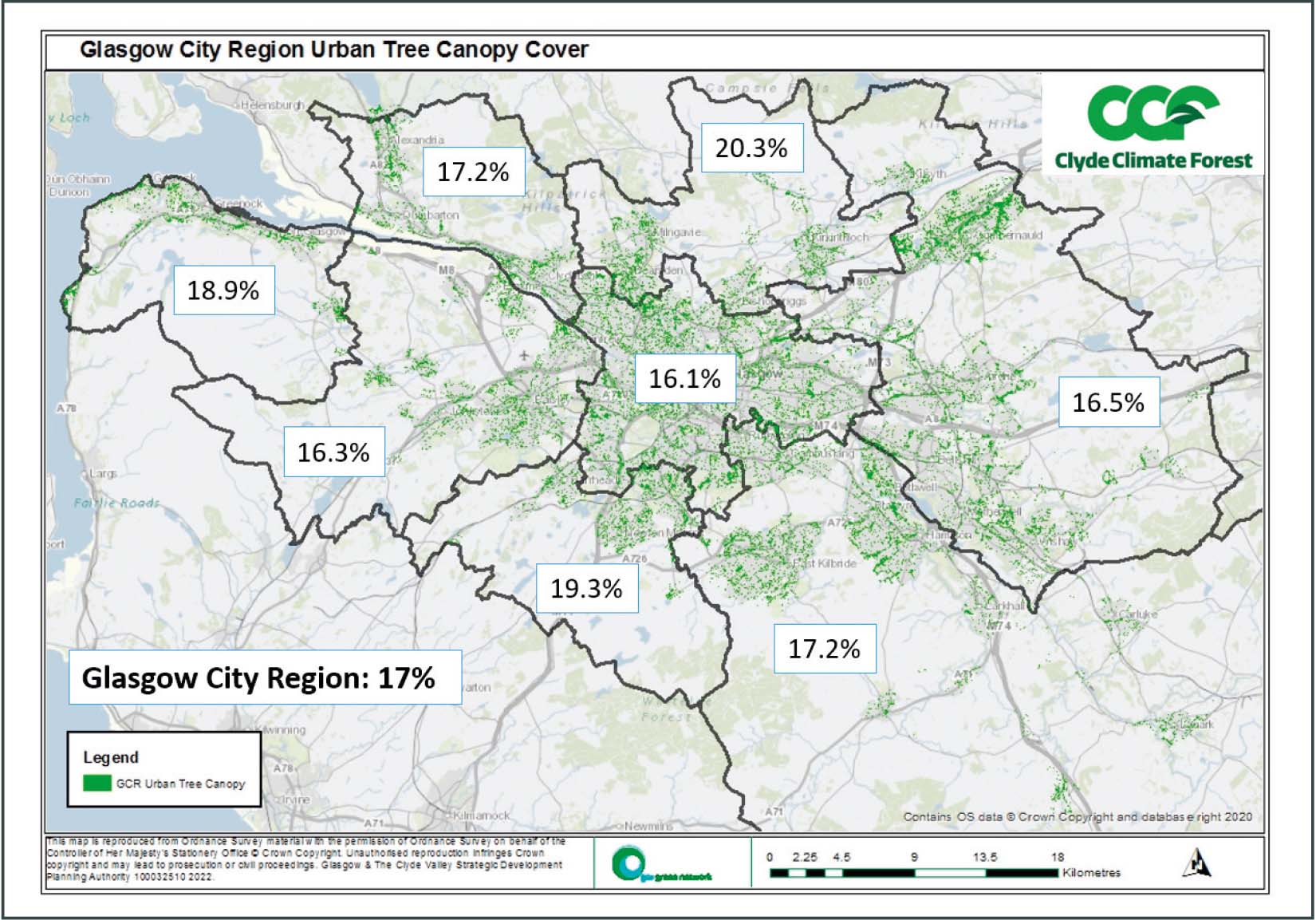
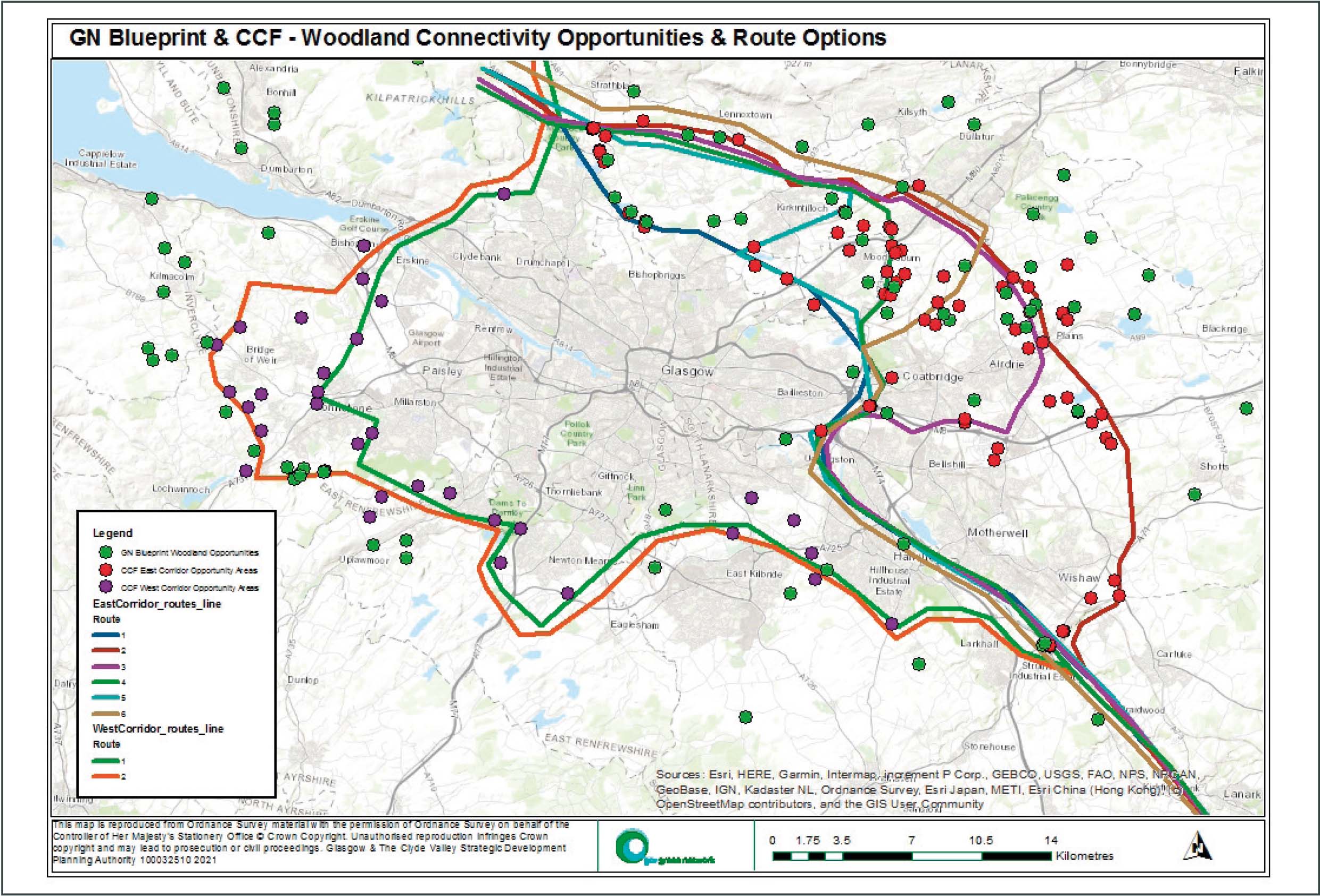
The Clyde Climate Forest (CCF) is being delivered as part of the Glasgow & Clyde Valley Green Network, with support from TCV, Green Action Trust, Glasgow City Region, Trees for Cities, Scottish Forestry and Woodland Trust Scotland.
A £400,000 grant from the Woodland Trust’s Emergency Tree Fund as well as £150,000 from Scottish Forestry has kick-started the development of new tree planting schemes and supports a project team over two years.
The project has big ambitions for trees, woods and forests across the region with a headline target of planting 18 million trees over the next decade (equivalent to 10 trees for every person living in the region).
However, the project has more specific aims based on the three Cs:
CANOPY – Urban trees provide cooling in heatwaves and surface water management for cloudbursts, whilst also providing some carbon storage and wildlife habitat. Even a moderate increase in canopy cover can aid adaptation to the adverse effects of climate change.
Forest Research has analysed high-resolution aerial photography of the Glasgow conurbation to assess existing tree canopy cover. The current tree canopy cover for urban areas in Glasgow City Region is 17.7%. Based on this analysis, the CCF will increase canopy cover through new tree planting in neighbourhoods with low levels of canopy cover, particularly in areas of deprivation and at risk from the impacts of climate change. Sixteen ‘target neighbourhood’ are being identified across the region in collaboration with local authorities. These neighbourhoods will be the focus for community engagement and preparation of tree planting proposals.
The CCF aims to work with local communities to increase the average tree canopy cover in urban Glasgow to 20% by 2032. It will take up to 1.5 million urban trees to be planted to achieve this target.
CONNECTIVITY – Native woodlands provide essential ecosystem services and wildlife habitat. Creating woodland connections helps to reverse the habitat fragmentation caused by decades of urban development, protect biodiversity and offer woodland species migratory routes as the climate changes.
Forest Research has assessed existing broadleaved woodland habitat networks on behalf of the CCF and identified where new woodland planting will make connections that provide a potential migration route for woodland species from the headwaters of the River Clyde through to the Loch Lomond and Trossachs National Park.
The CCF aims to increase the average broadleaved woodland network area by 20% by 2032 and achieve a contiguous migratory corridor by creating new native woodland connections at over 200 target locations.
CARBON – New forests are effective carbon sinks and can provide natural flood management, construction timber to substitute for high-emission steel and concrete, and wildlife habitats.
The Clydeplan Forest and Woodland Strategy identifies the potential to create 9000 hectares (approximately 18 million trees) of new forests across Glasgow City Region, amounting to an increase in forest cover of 3%. This is commensurate with the target for woodland expansion in Scotland as stated in Scottish Government’s Climate Change Plan.
The James Hutton Institute and Forest Research have mapped the carbon storage potential for woodland expansion in the region based on a range of afforestation options. This research indicates that, depending on the species and where trees are planted (i.e. the right trees in the right places), up to 1.5 million tonnes of CO2 could be sequestered by new forests as part of the CCF by Scotland’s Net Zero target date of 2045.
The CCF aims to increase forest and woodland cover in Glasgow City Region from a current 17% to 20% by 2032. It will require a doubling of the current rate of woodland creation to achieve this target.
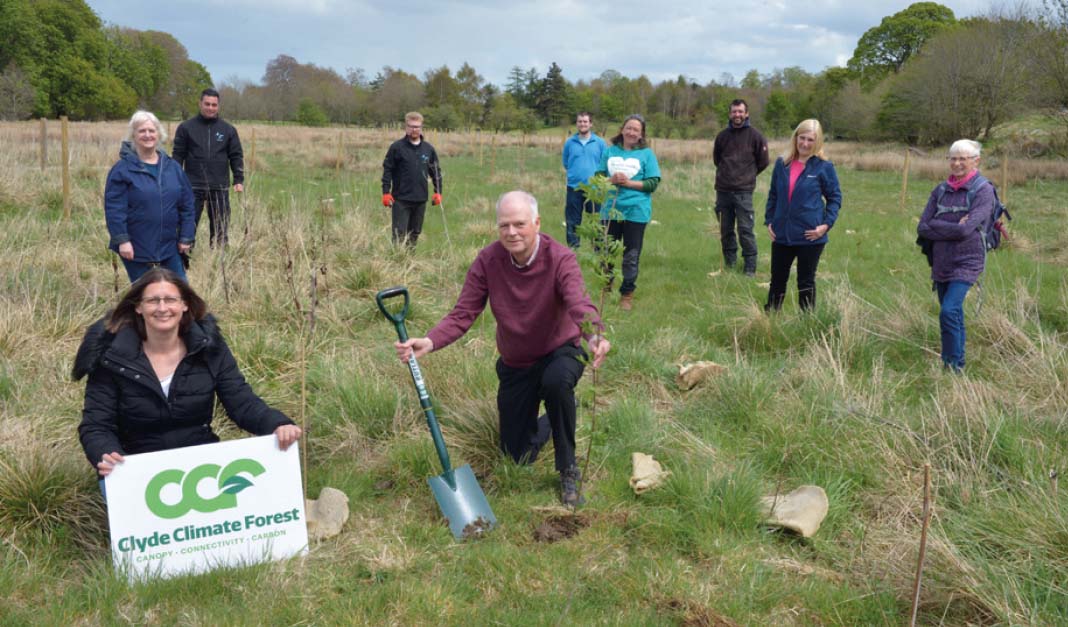
Whilst the CCF is focussed on the planting of trees, the care of our urban forest is crucial if the ambitions of the CCF to expand urban tree canopy cover are to be realised. With so many pressures on urban trees from built development, pollution and pathogens – not to mention increasingly extreme weather events such as storm Franklin – it can feel like urban tree planting is just ‘topping up a leaky bucket’. Additionally, council budgets where they exist for the care or planting of urban trees are under extreme pressure, and there is often reluctance to encourage tree planting because more trees are considered an additional maintenance liability.
The CCF needs to work with arborists to ensure that urban trees are properly valued for the amazing array of benefits they provide to people who live and work in the region. We are currently working on a CCF Concordat with the eight councils that comprise the Glasgow City Region partnership. The concordat is an agreement which will expect each council to play their part in the CCF. This includes high-level commitment to:
and an acknowledgement that:
In reciprocation of the commitment from the councils, the CCF commits to work to achieve CCF targets within each council area and to seek additional resources and funding to facilitate their delivery.
If you are a tree officer, urban forester or arborist working in Glasgow City Region, I hope you will support and promote the CCF and its ambitions. If you wish to find out more about the CCF please get in touch.
Max Hislop, Director, Clyde Climate Forest: max.hislop@tcv.org.uk, 07796 937972, www.clydeclimateforest.co.uk
This article was taken from Issue 197 Summer 2022 of the ARB Magazine, which is available to view free to members by simply logging in to the website and viewing your profile area.